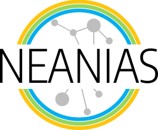The project stands out for the innovation of the services offered. In this article we highlight the main contributions of underwater research support services.
The UW-BAT service (U1 – Bathyprocessing) is unique in its way to offer a cloud-based and very user-friendly solution to post-process bathymetry and backscatter data and to create maps and digital models and mosaics from these results. Novice, as well as experienced users will discover a pre-defined workflow that allow a fast familiarization with the command-line and desktop based underlying MB-System suite. Even without hydroacoustic knowledge, students, engineers, or every curious user will be able to create a map of a number of different binary vendor raw data, as a first impression of the dataset acquired.
The UW-MOS service (U2 - Seafloor mosaicking from optical data) is the first service that provides an end-to-end solution for building large scale maps from underwater optical images, using either 2D mosaicking or 3D reconstruction techniques freely on the cloud, without requiring any local software installation. The service adapts to the degree of expertise of the user. Therefore, a non-expert user may just upload a set of images and obtain a map, while an expert user will find tools suited for mastering the mapping process and obtaining the best results. Within these tools, the data quality check and the underwater image enhancement methods are specifically devised for our service and, consequently, they are not present in any non-commercial nor commercial desktop solutions solving this same problem.
The UW-MAP service (U3 - Seabed classification from multispectral, multibeam data) is a novel cloud-service for the efficient and automated seabed classification from multispectral, multibeam data. It is a user-friendly cloud solution that integrates cutting-edge machine learning frameworks for mapping several seabed classes. Multispectral multibeam echosounders have become available very recently and the UW-MAP service is among the first solutions proposed for processing the backscatter data collected from these instruments, towards seabed classification and mapping. The UW-MAP service is expected to foster wider use and sharing of multispectral multibeam echosounder classification tools and data as well as support reproducibility and comparability of seabed classification and characterization results.
